Haha so I lied in the last article, we’re actually doing the Tang Dynasty next! This is for sure going to be a favorite of everyone—after all, who can resist the flamboyant, vibrant beauty of the Tang Dynasty? Let’s get right to it and see where some of our favorite Tang Dynasty hanfu comes from.
The Tang Dynasty was a period of time (618–907CE) preceded by the Wei/Jin Northern and Southern Dynasties and proceeded by the Five Dynasties Ten Kingdoms period, and then the Song Dynasty (the Five Dynasties Ten Kingdoms period is often regarded as part of the Tang fashion period for hanfu purposes because the fashion trends followed pretty closely). A flourishing golden age for China, the Tang Dynasty saw leaps and bounds in art, poetry, and exchange of culture—the most open-minded society that has existed in the world in a very long time. People freely exchanged cultural norms, aesthetics, and ideas between nations from the Silk Road and beyond, resulting in a blossoming of the world of clothing as well, and a rich collection of art for us to reference our hanfu off of.
Astana Cemetery
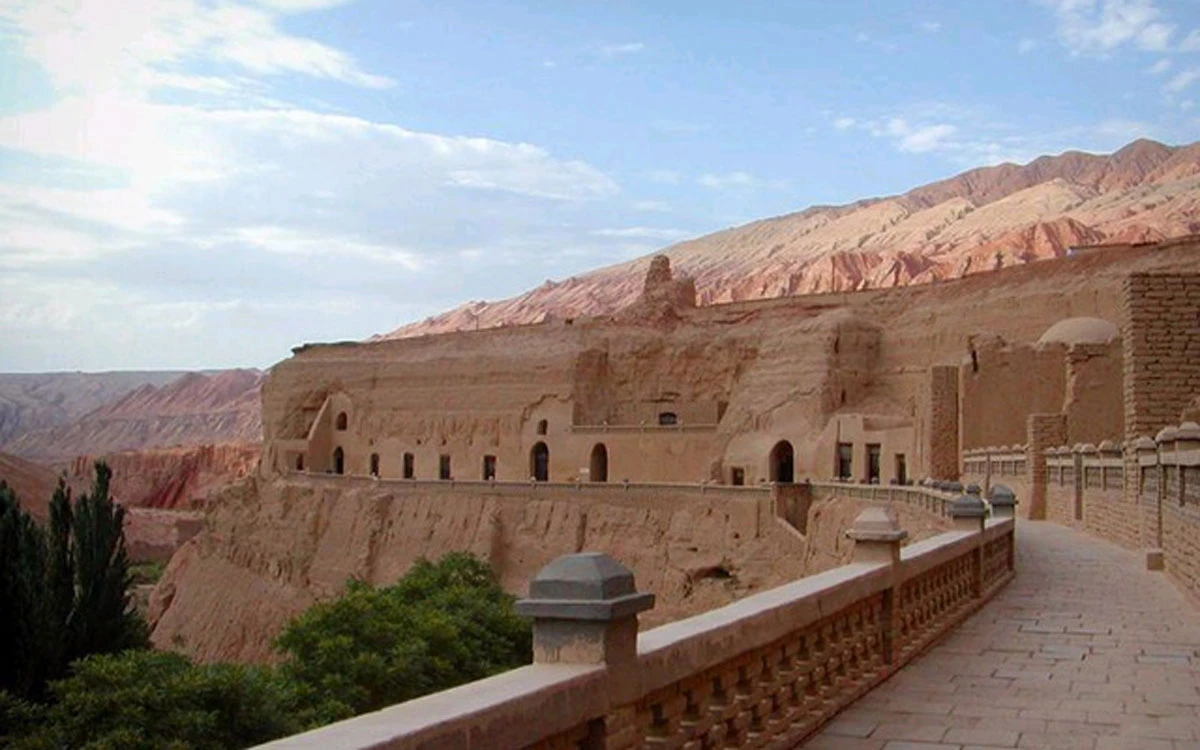
Interestingly, not a lot of clothing of the Tang Dynasty has been found at archaeological sites—this might be for many reasons, including the decomposition of cloth, less commonly seen burial with clothing, war destruction after the golden age, and other changes. There’s still more than the Wei/Jin Dynasties, though, since this was more recent. A good chunk of what we know about was actually found in a burial site near Turpan, Xinjiang, the Uyghur Autonomous Region. Long ago, the reach of the Han people wasn’t divided as it is today—people of different backgrounds intermingled from all over Asia and beyond that too. So for Han clothing to seek inspiration from the beautiful cultures around them and blend it into their own fashion trends isn’t rare at all—and we can see various examples of Tang Dynasty clothing right here.
The 阿斯塔那古墓/阿斯塔那古墓/a1 si1 ta3 na4 gu3 mu4/Astana Cemetery is a huge Chinese burial complex originally for settlers in Gaochang, an ancient oasis city now in ruins. It was annexed to China in the Tang Dynasty, becoming a busy stop for those traveling the Silk Road, and large numbers of Han Chinese inhabited it even before it was annexed, allowing for great exchange of culture and art. Does Xinjiang or Astana sound familiar to you? It should—this place was around in the Wei/Jin Dynasties too, and a couple of clothing relics belonging to those Dynasties have been unearthed here.
These two Tang Dynasty skirts, one green and one red, are some of the only relics we have of full pleated skirts—even then, you can see that the construction of both of them involve several pieces of fabric being sewn together. This follows the 破裙/破裙/po4 qun2/broken skirt construction, similar to the poqun we’ve seen in the previous dynasties, with trapezoidal pieces of fabric sewn together at the sides to create a sort of circle skirt like effect. The green has eight pieces, the red has six. Both have pleat lines near the skirt head/waist, and although time seems to have evened out the folds near the hem, we can see that they were made with pleats. So they’re not exactly the one-piece construction with a rectangular piece of fabric full of pleats that we usually see in Weijin Feng ruqun, but they’re still very significant.
The green skirt is called the 唐代寶相花印花絹褶裙/唐代宝相花印花绢褶裙/bao3 xiang1 hua1 yin4 hua1 juan4 zhe2 qun2/treasure flower printed tabby silk pleated skirt, and the red skirt is called the 瑞花印花絹褶裙/瑞花印花绢褶裙/rui4 hua1 yin4 hua1 juan4 zhe2 qun2/fortune flower printed pleated skirt. Both feature a print of repeating floral medallion patterns, a common pattern regarded as auspicious at the time, characteristic of a lot of Tang Dynasty clothing and art. Both are made of tabby (plain-woven) silk, with well-preserved dye colors.
Many look to the red skirt as the 石榴裙/石榴裙/shi2 liu2 qun2/pomegranate skirt from ancient poetry describing Tang Dynasty girls’ fashion favorite, a red skirt that men allegedly fell to their knees at the sight of, as in the saying 拜倒在石榴裙下/拜倒在石榴裙下/bai4 dao3 zai4 shi2 liu2 qun2 xia4/fall to his knees before the pomegranate skirt, with the nickname of pomegranate skirt coming from the poem 五日觀妓/五日观妓/wu3 yue4 guan1 ji4/Watching Beauty in the Fifth Month by 萬楚/万楚/wan4 chu3/Wanchu, a Tang Dynasty poet. The poem describes the revelry of Duanwu Jie, or the Dragon Boat Festival, and goes like this:
西施謾道浣春紗,碧玉今時鬥麗華。
眉黛奪將萱草色,紅裙妒殺石榴花。
新歌一曲令人豔,醉舞雙眸斂鬢斜。
誰道五絲能續命,卻知今日死君家。
In simplified:
西施谩道浣春纱,碧玉今时斗丽华。
眉黛夺将萱草色,红裙妒杀石榴花。
新歌一曲令人艳,醉舞双眸敛鬓斜。
谁道五丝能续命,却知今日死君家。
In pinyin + tones:
Xi1 shi1 man2 dao4 huan4 chun1 sha1, bi4 yu4 jin1 shi2 dou4 li4 hua2.
Mei2 dai4 duo2 jiang1 xuan1 cao3 se4, hong2 qun2 du4 sha1 shi2 liu2 hua1.
Xin1 ge1 yi1 qu1 ling4 ren2 yan4, zui4 wu3 shuang1 mou2 lian3 bin4 xie2.
Shei2 dao4 wu3 si1 neng2 xu4 ming4, que4 zhi1 jin1 ri4 si3 jun1 jia1.
and in English, to the best of my translating ability:
Xishi, one of the Four Ancient Beauties of China from the Spring and Autumn period, washes silk in silence; Biyu, a lowborn concubine favored by the emperor during the Liu Song Dynasty, and Lihua (either empress Yin Lihua from the Eastern Han Dynasty, or the Southern Chen Dynasty concubine Zhang Lihua) rival each other in beauty.
The brown color of women’s eyebrow makeup captures the color of the citron daylily, the pomegranate dies of envy compared to the beauty of the red skirts.
Each new song brings everyone’s admiration, drunken dancing makes it hard for one’s eyes to stay focused.
Those who carry the multicolored thread (people would wind these around their arms on Duanwu Jie as good luck) will live forever, yet they know that they will die today in this house.
That should give you an idea of how important those skirts were! They were the envy of every girl in the Tang Dynasty. Several other pieces of fabric likely belonging to pomegranate skirts have been unearthed elsewhere, but they’re all incomplete and unfortunately don’t have very clear pictures, so aside from verifying their beauty and the material their fabrics were made of, they don’t show you what the construction of the skirt looks like—the Astana skirts are probably the best example. We’ve got several modern manufacturers of the pomegranate skirt, too, even though there’s quite a bit up to interpretation. Here are a few different models.
(Astana should have a half-sleeve top in there too, but I couldn’t find good references or pictures of it. Instead, let’s move on to the other major reference for Tang Dynasty Hanfu.)
Nara Shosoin Repository
So where are all the other beautiful Tang Dynasty relics? For this, we’ll have to turn, surprisingly, to Japan.
Wait, that can’t be right! Japan doesn’t have a ton of Han people. Or does it? Well, a long time ago, there were quite a few—and the reverse was true too. Large numbers of Japanese intermingled with the Chinese in China, bringing back an abundance of clothing, textiles, and art to share with each other on their islands. The Tang people were happy to share, after all; beauty is meant to be admired! And so some of the clothing gifted to Japan was kept even better preserved there, now safely stored in the Shosoin Repository in Nara, Japan. From images and additional reference to artworks and sculptures, a vast majority of our Tang Dynasty hanfu relies on these well-preserved relics, all specially dated and stored.
We can see several examples of the 圓領袍/圆领袍/yuan2 ling3 pao2/round-collar robe pieces stored here, especially the gender neutral 缺跨袍/缺跨袍/que1 kua4 pao2/Quekua robe, a type of less formal Tang Dynasty yuanlingpao with a slightly upright collar and side slits. One prime example is this extremely well-preserved green garment, the 大歌綠綾袍/大歌绿绫袍/da4 ge1 lu4 ling2 pao2/Dage green silk damask robe. Based off the measurements, we can be pretty sure that this robe was made for womenswear, made with a chartreuse damask material with medallion patterns and lined with a lighter tan color. We can see a slight taper to the sleeves and one piece of fabric from the top of the robe to the bottom, no vertical segmentation, but a connecting line coming down from the left shoulder to the hem.
Another is the tan 正倉院古物第27號布袍/正仓院古物第27号布袍/zheng4 cang1 yuan4 gu3 wu4 di4 27 hao4 bu4 pao2/Shosoin Repository Antique #27 Cloth Robe (names will differ, couldn’t find one that was normalized). Following the same basic construction as the green robe, this one has been opened up to reveal that the front pieces of the robe are both separate trapezoidal pieces of fabric sewn on. Two buttons on either side of the round collar hold it together, as well as two further down the body, hidden by the flap of the front of the robe. This robe in particular has an interesting printed pattern, a little geometric, and for many served as the base piece for the design of the Quekuapao in the hanfu industry.
On the menswear side, one of the most common pieces found in the Shosoin are these 唐半臂/唐半臂/tang2 ban4 bi4/Tang Dynasty half-sleeve tops. All following a similar construction, the sleeves reach halfway down the upper arm, with a characteristic v-shaped cross collar and a 腰襽/腰襽/yao1 lan2/yaolan waist segment sewn separately onto the upper part of the garment, usually in a contrasting color. These were usually either worn alone or under a yuanlingpao, used to support the upper body figure in holding up the fabric of the yuanlingpao, so the fabric here tends to be thicker double-layer woven silk brocade, often with the printed or woven medallion patterns typical of the time.
As for womenswear, we’ve finally got some tops to go with the skirts we found from the Astana Cemetery! A lot of these don’t have official names that I could find, so I’ll refer to them with the name of the garment we have now made with references to the relic.
This 圓領上衣/圆领上衣/yuan2 ling3 shang4 yi1/round collar top is what most hanfu designers use as the innermost layer for mid to late Tang Dynasty clothing. It shares a lot of similarities with the yuanlingpao, except shorter, and the contrasting colors clearly tell us that the sleeves and collar were sewn on separately from the main body. You can also see seam lines on the body running from shoulder to hem, suggesting that the trapezoidal pieces on the front were also sewn on separately. The sleeves taper slightly and tend to be quite long compared to the armspan. This would’ve been the inner layer (after underwear etc.) for a Tang Dynasty outfit, with a Tang-style Beizi worn over the top.
And here are some examples of that! Most people associate 褙子/褙子/bei4 zi0/Beizi with the Song Dynasty beizi, a straight-sleeved, parallel-collar garment worn like a cardigan. Tang Dynasty beizi are also worn as outer layers, but often the similarities end there. Most Tang beizi are short sleeved or sleeveless, hence why they’re also sometimes called 半臂/半臂/ban4 bi4/half-sleeves, not to be confused with the earlier Tang banbi for men. The most common collars we see are either round collars, 坦領/坦领/tan1 ling3/u-shaped collars, 垂領/垂领/chui2 ling3/sagging collars, like parallel collars except the two sides narrow towards the midline of the torso, resulting in a sort of v-neck shape. Most are short enough to end near the waist and not tucked into skirts; of course, they’re always worn with a long-sleeved inner layer, so they aren’t quite that scandalous!
And last but not least, we have the remains of a skirt. It’s only half intact, but given the figurines and paintings we have to cross-reference off of, it’s fairly easy to conclude that the construction of this skirt was also a poqun. The striped fabric appears in a multitude of murals and figurines. The skirt head is made of a different piece of fabric, lengthened into skirt ties—it really resembles the skirts that we wear today in hanfu.
Other References: Paintings and Figurines
Curious about the heziqun, or dunhuang style? Clearly there are things we haven’t covered. That’s absolutely right—a lot of our inspiration for the Tang Dynasty comes from the artwork we’ve recovered, which is far more vibrant and clear than the older art from the Wei/Jin Dynasties. Apart from cross-referencing with physical relics, many designers have made their guesses at the construction of various types of Tang Dynasty clothing based on paintings and sculptures, as well as taken inspiration from their fabrics.
For another example of the Tang beizi, we can look to 法門寺/法门寺/fa3 men2 si4/Famen Temple in Shaanxi. The temple has existed since the Northern Wei Dynasty (386CE ish), and the outer portions of the pagoda collapsed in 1981, leading to an excavation in 1987. Here we can see a 對襟半臂/对襟半臂/dui4 jin4 ban4 bi4/parallel collar half arm top, made for the Buddha body relic. While this piece of clothing isn’t made to be worn by common people, instead made for religious purposes, it’s still something we look at to cross-reference the construction of Tang Dynasty tops from. This silk garment is intricately embroidered with real gold thread—not just thread in the color of gold, bu thread actually made of gold. Similar embroidery appears in several other cloth relics in the temple.
Heading back to the Astana Cemetery, there’s another important type of relic I haven’t detailed: figurines. There are honestly too many of these to count. Known as 俑/俑/yong3, these are wooden figurines often buried with the dead, sometimes complete with real silk clothing, as in this figurine from Astana. She’s wearing a striped poqun (like the one from the Shosoin Repository), yuanling top, and what looks like a chuiling Tang beizi, with a piece of fabric draped over her shoulder—I’m pretty sure it’s a 披帛/pi1 bo2, a sort of shawl accessory common to Tang Dynasty women. While the clothing on these dolls aren’t necessarily constructed in the exact same way as they would be on people, we can use them as inspiration.
In terms of paintings, there are a few to note. The first is the Dunhuang Caves in Gansu, a massive cave system with more than 500 caves located at a religious crossroads on the Silk Road. Increasingly popular among the hanfu community, the clothing depicted in the Dunhuang Caves isn’t technically considered hanfu since it’s probably not even depicting mostly Han people, but we can use the murals as examples of color inspiration in the Tang Dynasty: the greens, oranges, and blues used in the murals are often seen in Tang Dynasty clothing colors.
Another is often referenced for the late Tang Dynasty and Five Dynasties Ten Kingdoms period, 簪花仕女圖/簪花仕女图/zan1 hua1 shi4 nu3 tu2/Court Ladies Wearing Flowered Headdresses. The 訶子裙/诃子裙/he1 zi3 qun2/heziqun design comes from this painting, as well as the ethereal aesthetic of the translucent 大袖衫/大袖衫/da4 xiu4 shan1/large-sleeved top.
Similarly, the painting 搗練圖卷/捣练图卷/dao3 lian4 tu2 juan3/Court Ladies Preparing Newly Woven Silk by artist Zhang Xuan is an extremely well-recovered painting (version we have is a copy from the Song Dynasty). It shows the classic 齊胸/齐胸/qi2 xiong1/chest-high silhouette common in the early Tang Dynasty.
And that’s a wrap! I’m going to go sleep for ten years now. Note for those interested in learning more: I couldn’t cram everything I found into this article, so I left out a few things that I couldn’t find a lot of information on, but if you’d like to go look at them yourself here’s a little list of interesting relics that are out there:
- 2 yuanlingpao robes in the China Silk Museum, one blue and one brown, both silk
- Banxiu in Astana Cemetery
- Several other figurines from Astana Cemetery, there are a LOT of them
- A Tang Dynasty corpse of a woman with intact burial clothes, wearing a qixiong (chest-high) qun—couldn’t find good pictures of this one but very cool
- More in the Nara Shosoin Repository, should be at least two more yuanlingpao and three more Tang banbi that I didn’t show, probably other relics too but they’re only shown periodically at museums and not accessible to the public at other times so I’m not sure how many are there
- 唐三彩/唐三彩/Tang2 san1 cai3/Tang three-colors, a collection of glazed pottery and sculptures (didn’t include because this article is WAY too long wow)
That’s all, and this time I’m ACTUALLY going to be introducing the Song Dynasty next!
More about Hanfu Unearthed Series:
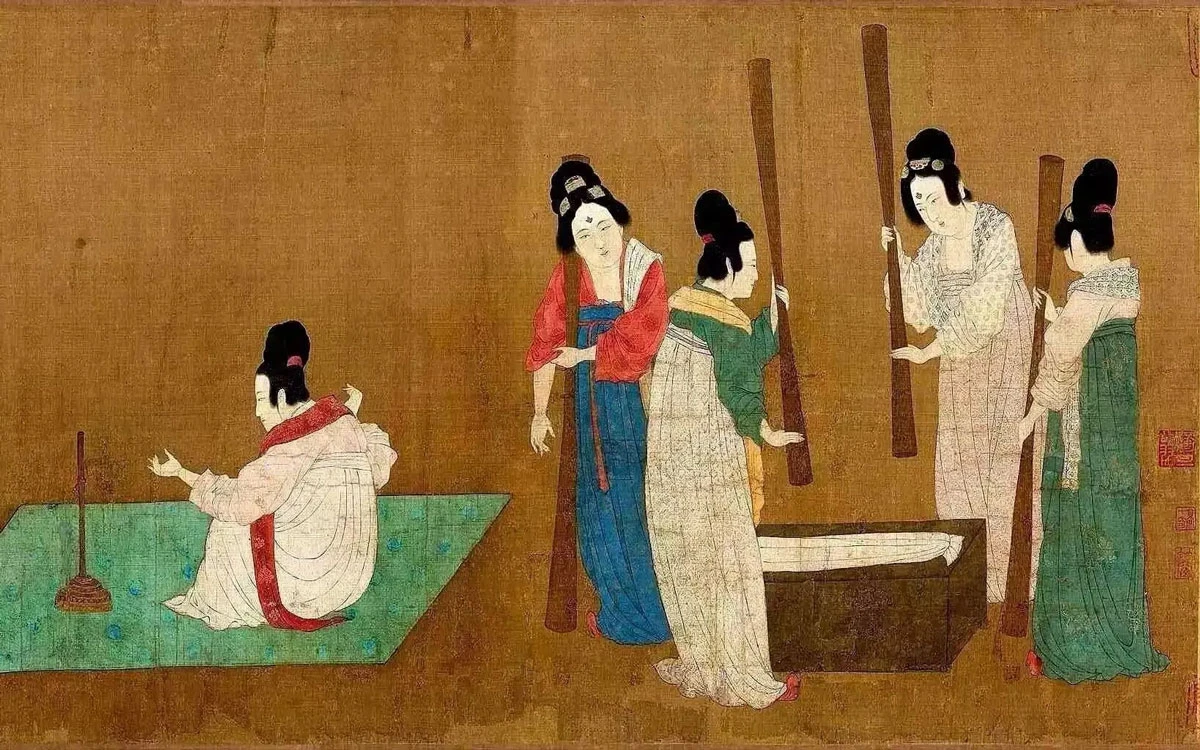

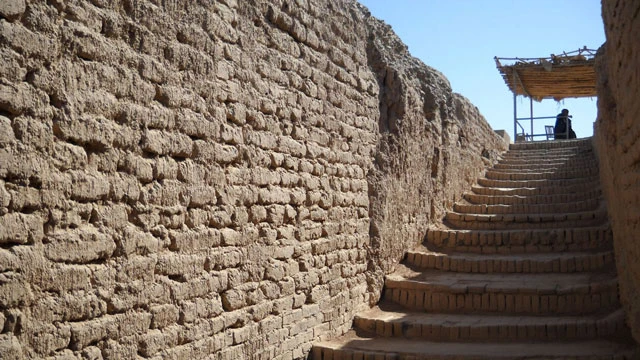
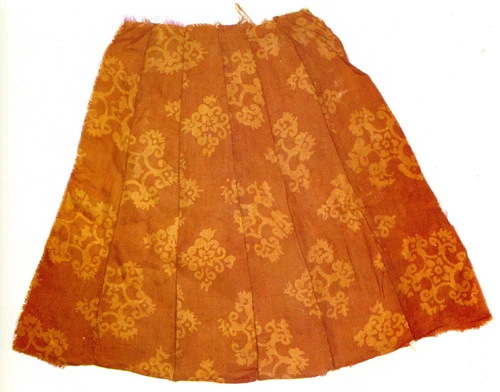
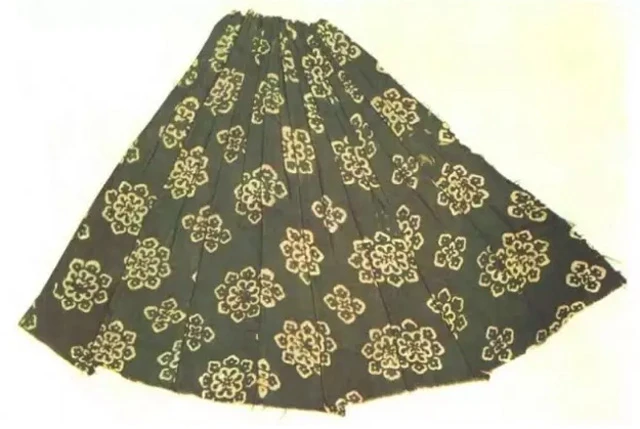

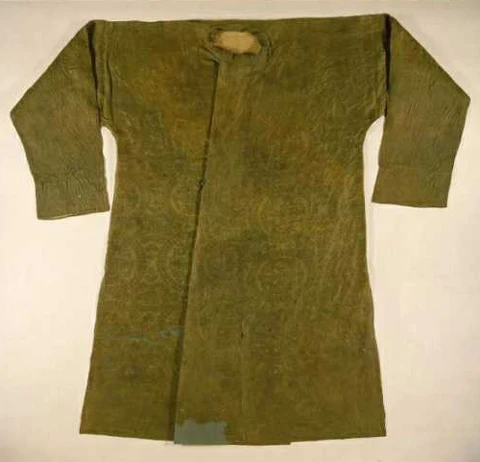
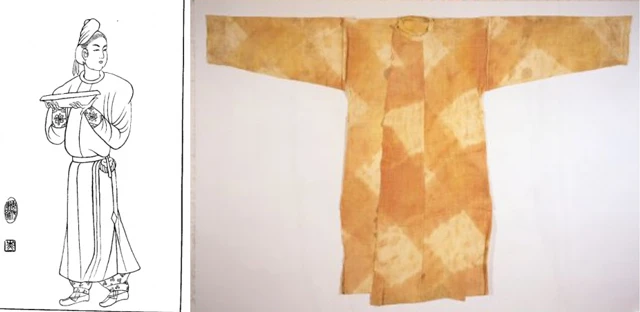
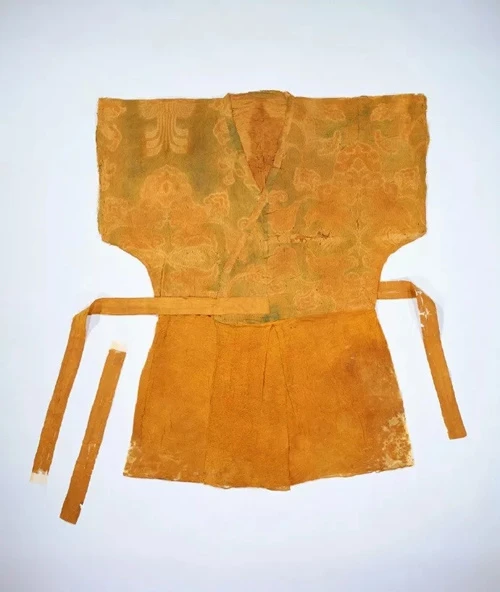
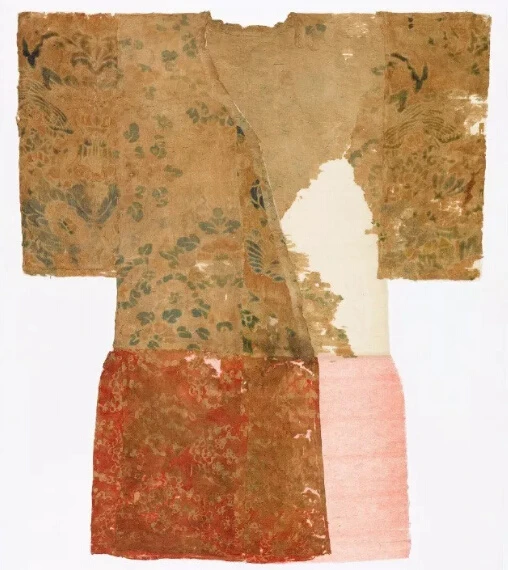
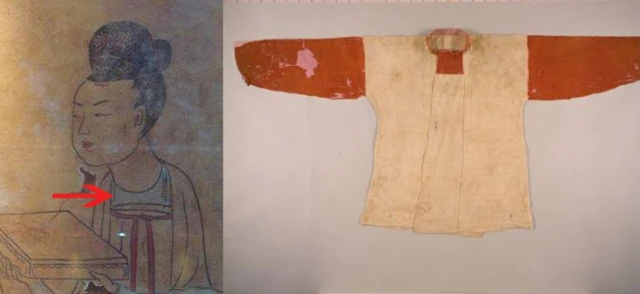
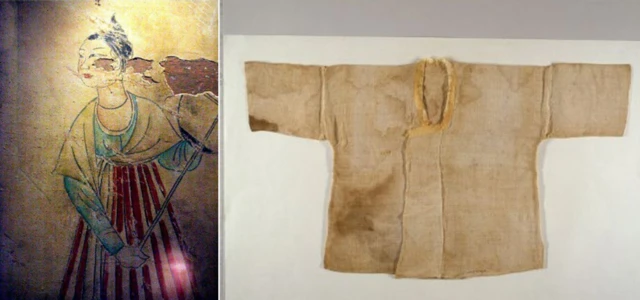
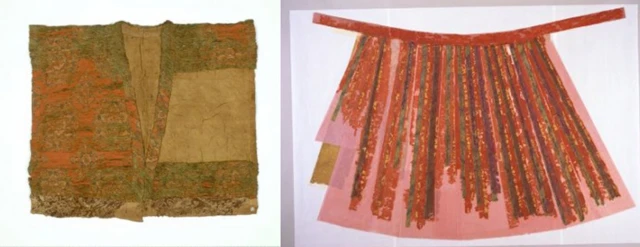
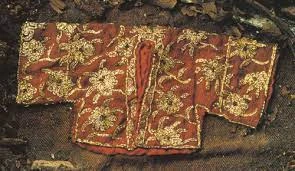
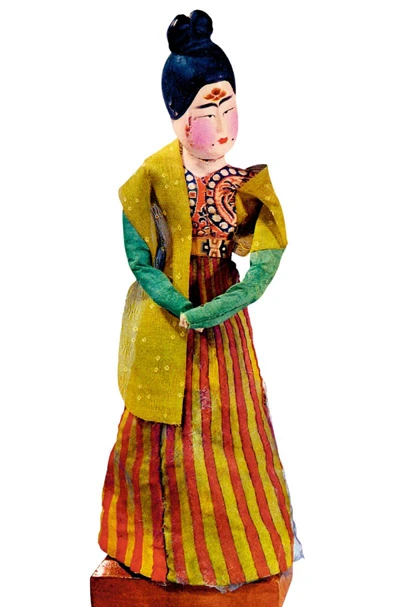
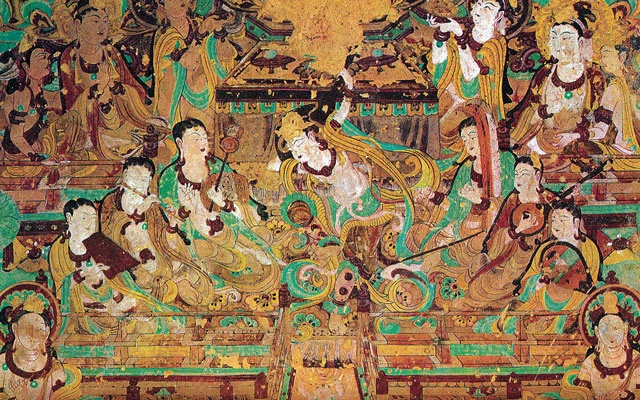
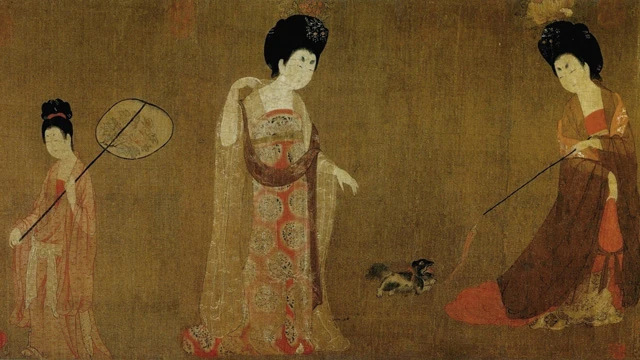
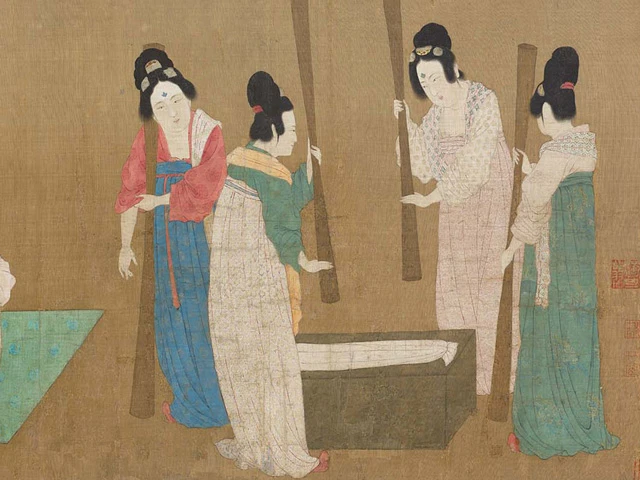

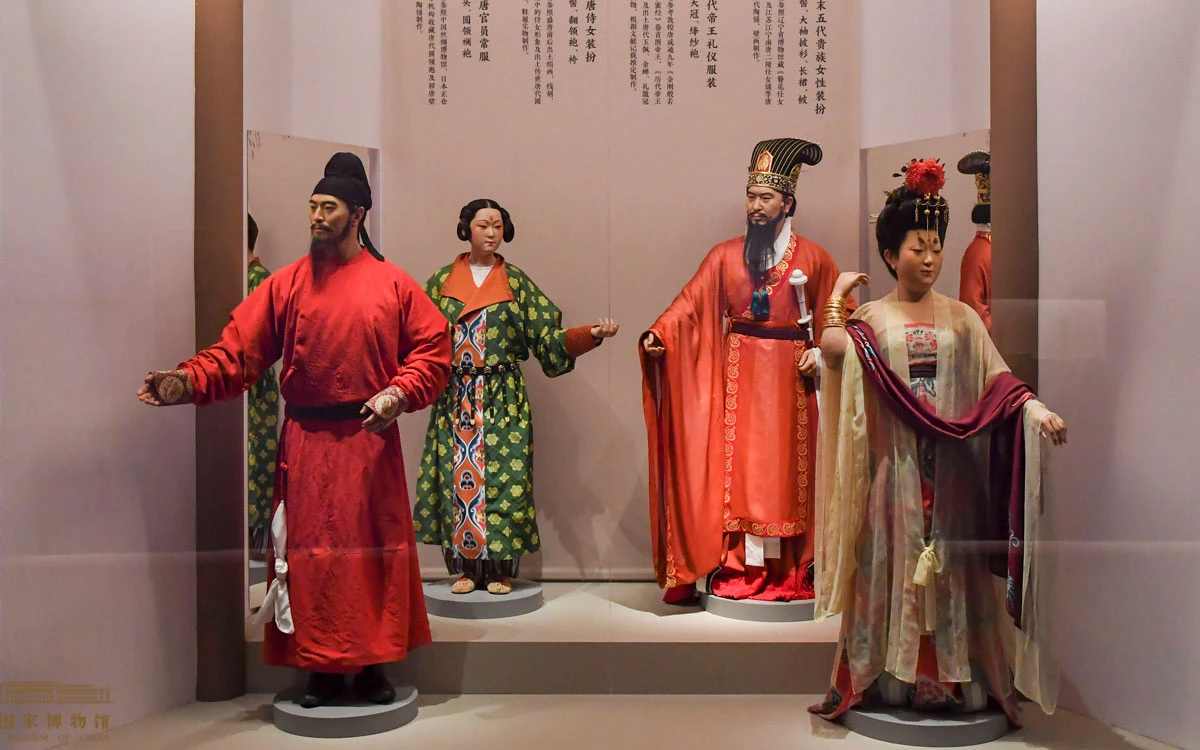
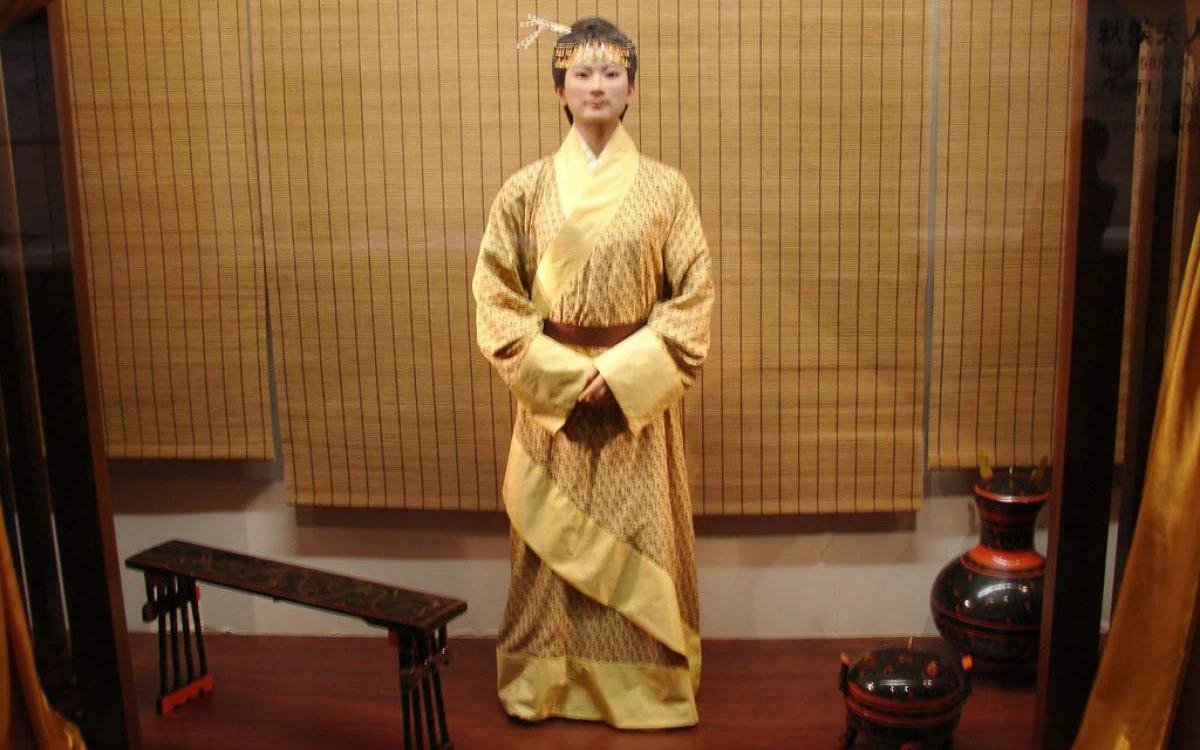
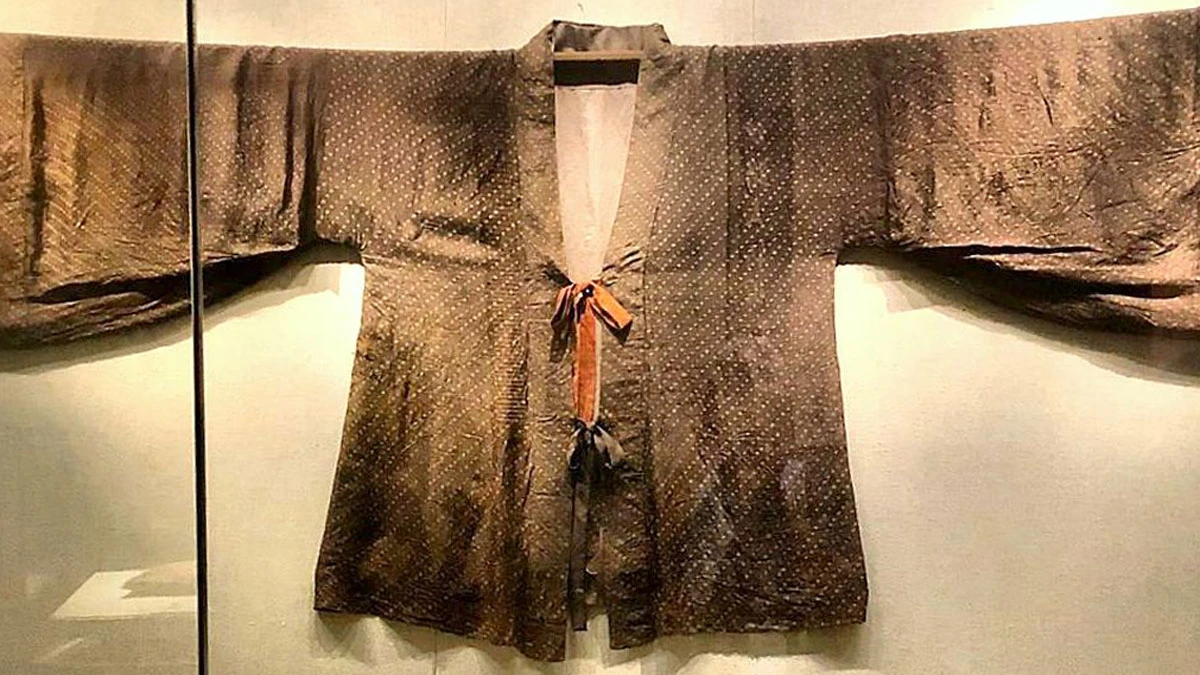

amazing that these pieces survived!
I wonder how people used to make gold threads OwO
Gold thread is still made today. Gold is beaten very fine, then wrapped around a core of a fiber, often silk. You don't sew with it like you do with regular thread. Instead, it's laid on top, then couching stitches are used to hold it in place. Embroiderers still do this today.
Hmm, I did not know of these five-coloured silk threads on Dragon Boat Festival, that's cool.
Semangat berkarya
Terimakasih artikelnya
Another great article thanks! I love learning the names of the archaeological sites!
Waww😍